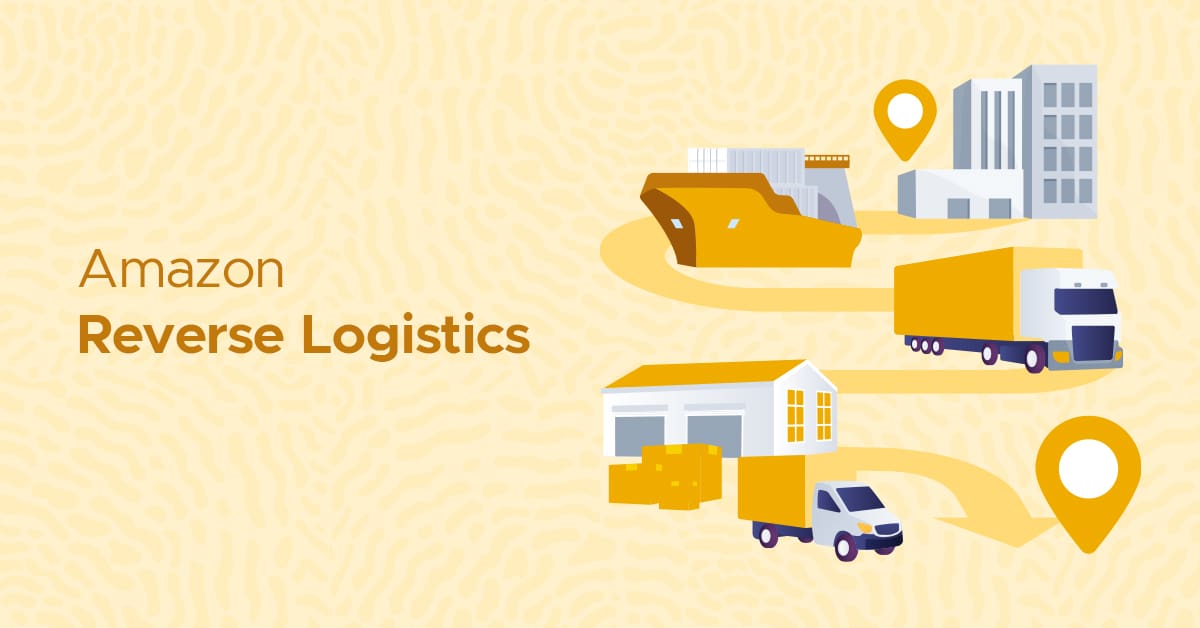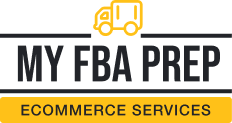
Everything You Need to Know About Amazon Reverse Logistics

An unavoidable aspect of selling on Amazon is accepting returns, usually within 30 days of a customer purchasing a product. As an Amazon seller, you have to match or exceed the platform’s return policy, which means accepting no-fault returns and establishing robust reverse logistics.
While participating in FBA can take much of the hassle of reverse logistics off your plate, you’ll still have to consider the associated fees, what to do with products after they’re returned, and set up procedures to handle every product that comes back to your Amazon warehouse properly. To ensure smooth operations, you’ll need to develop clear reverse logistics.
Returns on Amazon
Amazon’s set returns process allows you to offer customers one of three options:
- A return address within the U.S.
- A prepaid return label
- A full refund with no need for the customer to send back the product
You need to determine how much each option costs and what criteria a return has to meet to be eligible for one of these offerings. For example:
- Ask the customer to pay shipping for products with high fulfillment costs, a low rate of return, and high competition in the market. If every penny counts, you don’t want to work the cost of returns into the product itself, even if it works out to only a few extra cents per order.
- Offer prepaid return labels when you can easily work the cost of returns into your profit margins. For instance, most Amazon products have a 5%–15% return rate. If you can incorporate that additional expense into your item’s price, you can improve your customer experience by providing free return labels in each package.
An Amazon FBA prep service can insert those labels directly into packages during pick and pack, so all you have to do is wait for products to come back. However, you’ll have to set up automatic refund approval options and automatically opt to use your own labels rather than Amazon’s.
- Offer a full refund without requiring the customer to send the product back when: the product is obviously too damaged to repair or return to inventory; the cost of repairs or returning to inventory are higher than the product’s profit margin; the cost of reverse logistics is too high to justify a return; or it’s better for your brand or customer service team to leave the product with the buyer.
You’re often responsible for paying return shipping depending on the reason for the return, so you need to set up reverse logistics that don’t hurt your margins. Be sure to align your settings in Seller Central as well so your system will automatically accept and process these kinds of returns when possible.
If you sell through FBA though, the buyer will return the product directly to Amazon. Once they receive the item, they’ll inspect it to determine if they’ll destroy it, return it to you, or add it back to your inventory, depending on your criteria. So, set your returns policy in your seller account.
Amazon automatically processes refunds for all policy-eligible return requests, which allows you to refund customers within Amazon’s required two-day window. However, if you receive an out-of-policy request, you’ll have to log in to Seller Central, go to Orders, then Manage Returns, and deliver an unpaid or prepaid return label to the customer. If the buyer then ships the product back to you, they’ll use either your prepaid shipping label or pay for Amazon to print one for them.
Overseeing Amazon reverse logistics
Once the customer returns an item to you, you have to decide what to do with it. That process normally comprises:
- Inspection
- Sorting
- Beginning the designated next process (i.e., repair the product, resell it as new or returned, refurbish it, recycle it, or destroy it)
You’ll therefore have to establish procedures for each of those stages. As an example, for repair services, you’ll need a sorting bin for products that you’ll send to a repair center. An Amazon-specific 3PL can likely handle that, but Amazon won’t. Meanwhile, if you ship with FBA, your only option is to submit a removal request and have Amazon return the product to you, and that will result in extra fees. You’ll also have to complete this within 60–120 days of the customer receiving a refund or replacement.
If you want to resell a return as a new product, the FBA program will handle that, even if you use Multi-Channel Fulfillment. New-in-box items are returned to your inventory automatically.
You can still set up automatic returns if you use a 3PL instead of FBA. In addition, your 3PL can likely handle repackaging so you can seamlessly return even opened packages to your inventory.
Managing the cost of returns
Whether you sell through FBA or FBM, you’ll incur fees with returns. However, the amount depends on the reason for each return. Common return scenarios are:
- Resellable items: Your item will be returned to your inventory and Amazon will refund some of the fees you paid.
- Defective product: You’ll lose the cost of the product as well as the selling fees. This also occurs when items lack proper labeling.
- Item not received: Amazon may refund some fees and won’t charge a return fee. If they do, you may qualify for FBA reimbursement, but that will likely require you to file a manual claim.
You’ll have to decide when to dispose of products and when they should be forwarded back to you. Then, set up automatic rules to have Amazon send back or dispose of items depending on your established criteria. Keep in mind, though, Amazon may discard inventory if a label is missing. They’ll also charge a return fee if your product exceeds the normal return rate for its category. That fee starts at $1.78 for small standard products weighing up to two ounces.
Best practices for Amazon reverse logistics
Amazon has strict regulations for reverse logistics. To help you avoid penalties and support headache-free procedures, consider the below recommendations:
- Try to minimize returns. As previously discussed, Amazon charges for every return, and if they exceed thresholds for the category, you’ll pay an additional fee.
- Research the best overall options for your returns and set up automatic acceptance for returns where possible, since Amazon requires you to accept returns within two days. That also means you have to craft a return and refund policy that aligns with how your business operates, your costs, and your priorities.
- Pinpoint where you incur expenses to help you make the best decisions about what to do with your product: Prioritizing cost savings may mean leaving the item with the customer, while emphasizing sustainability could entail shipping products back and repairing them. You must understand the factors that influence your supply chain before setting up reverse logistics.
- Work with a 3PL to consolidate reverse logistics across all your platforms into a single warehouse. The provider will inspect and rate products to return them to inventory or send them back to the seller or manufacturer for repair to streamline your back-end processes.
Wrapping up — Empower your Amazon store to handle returns with ease
Amazon reverse logistics are more complex than their standard direct-to-consumer counterpart, because you have to abide by the marketplace’s stringent terms. That means accepting almost all returns within 30 days, covering return shipping in many cases, and having just two days to accept return requests. Craft a clear and explicit returns policy, adopt automation, and leverage a 3PL to enable faster processing and lower costs. These measures will help you meet Amazon’s standards while staying profitable and keeping customers happy.
